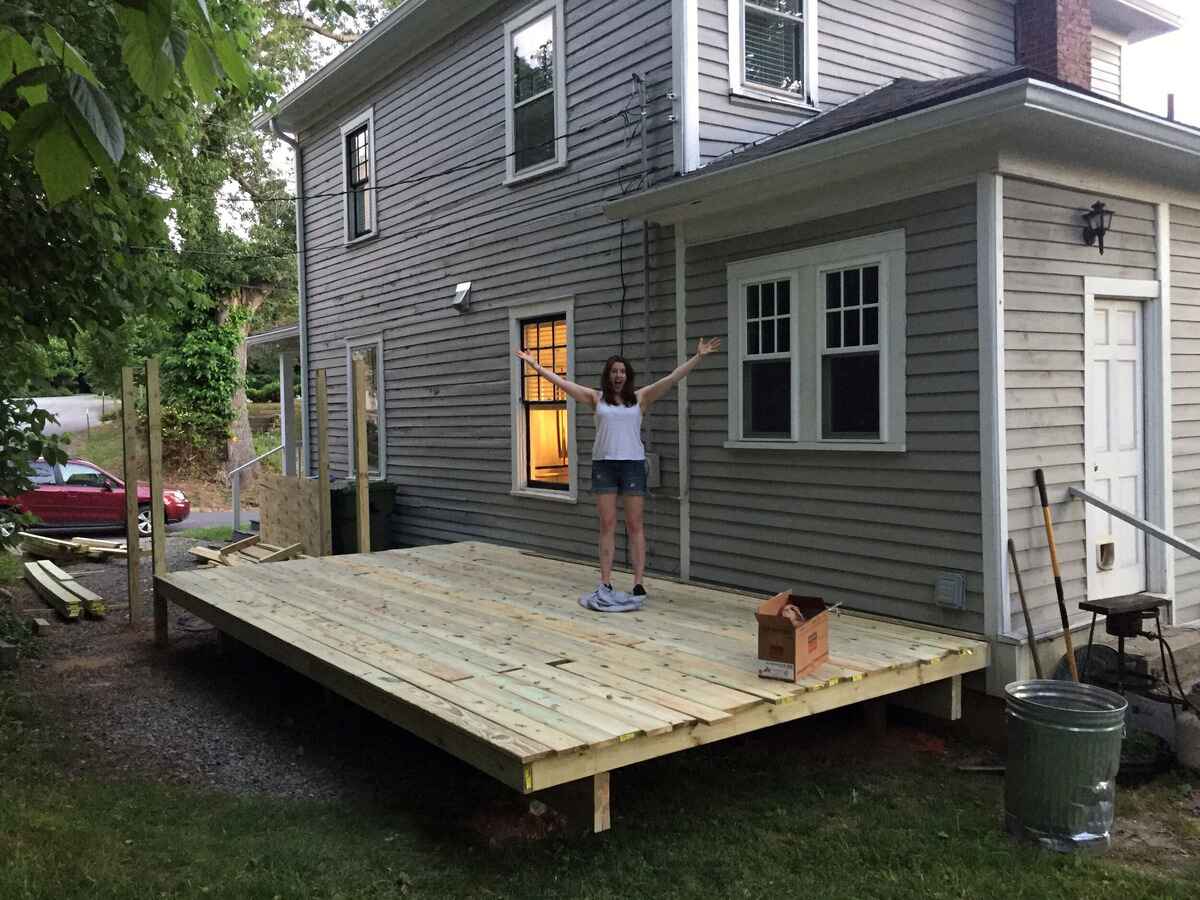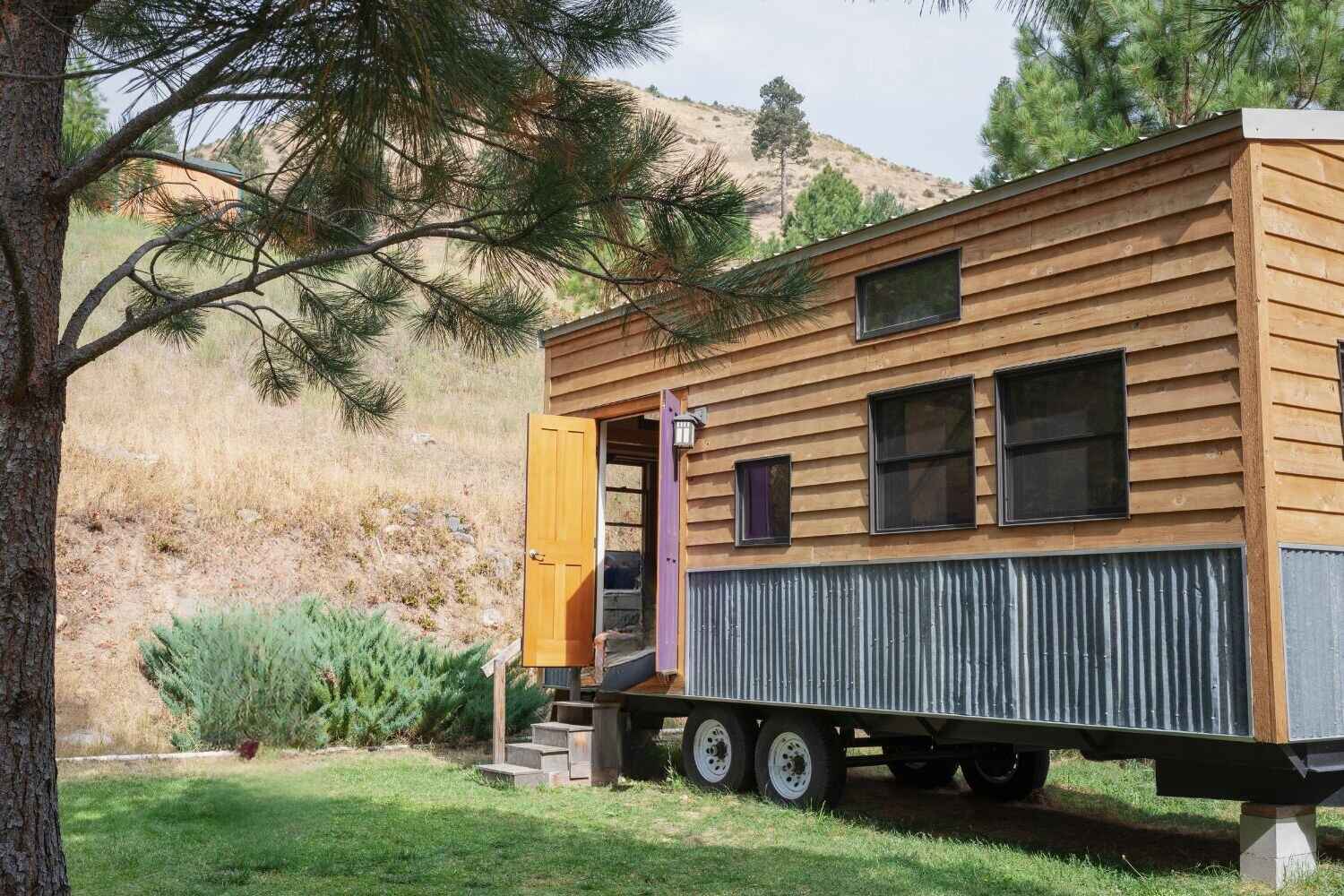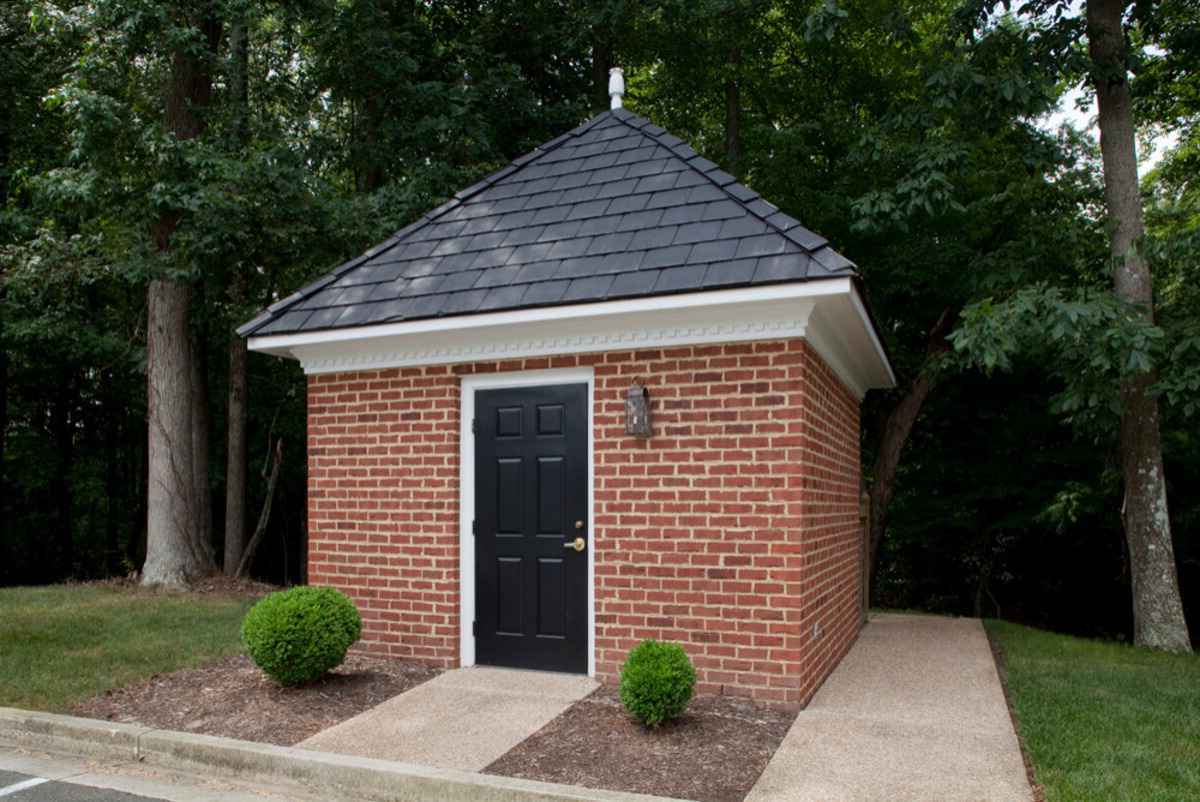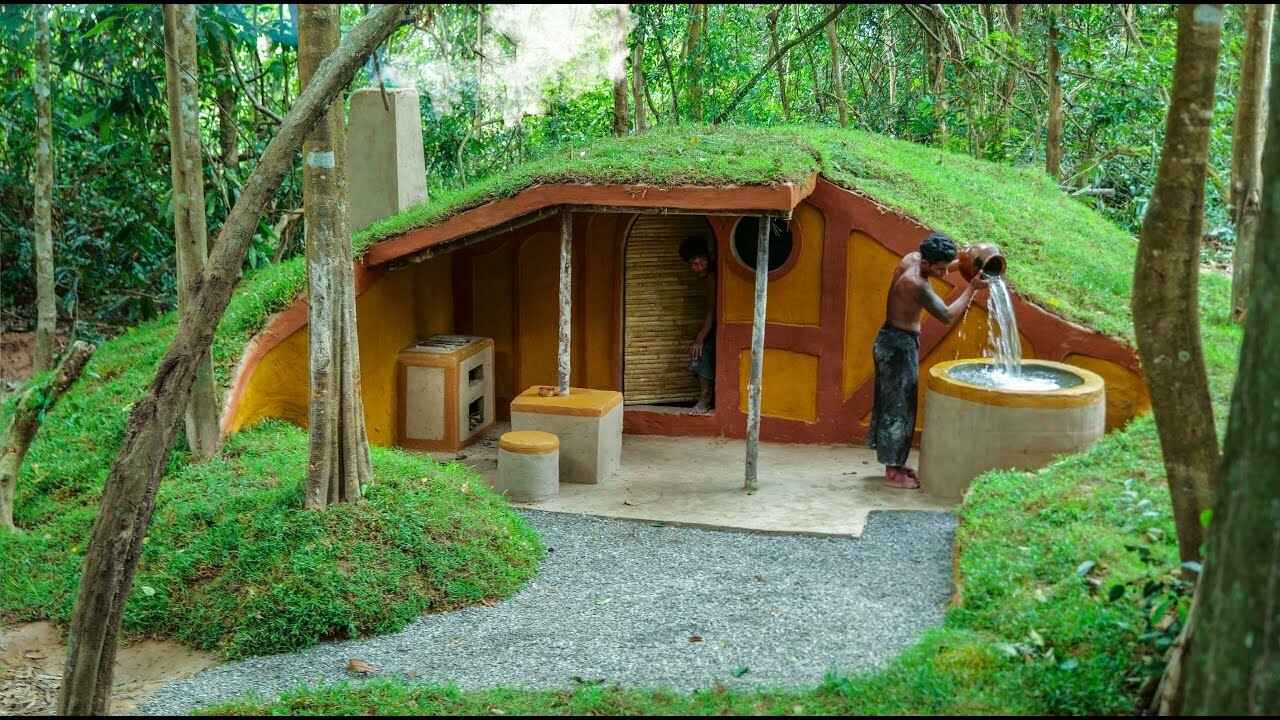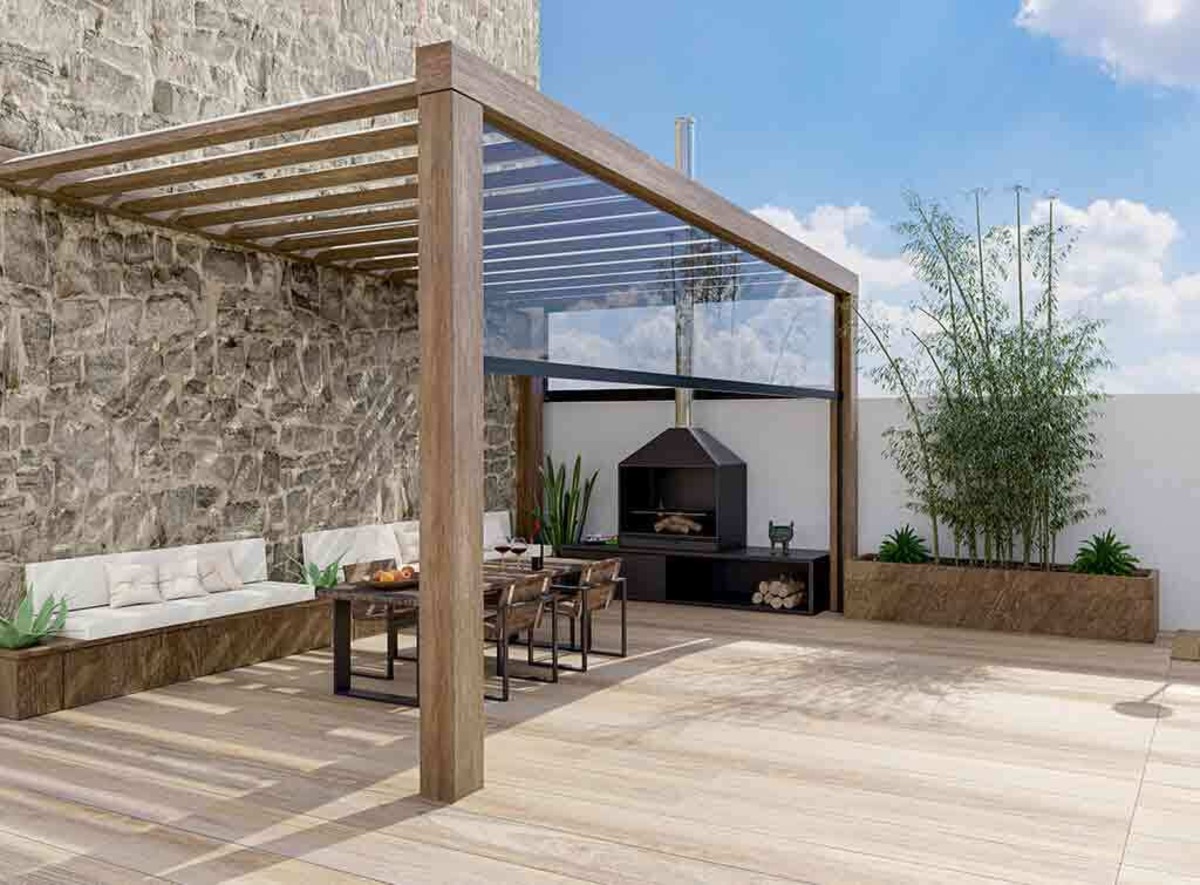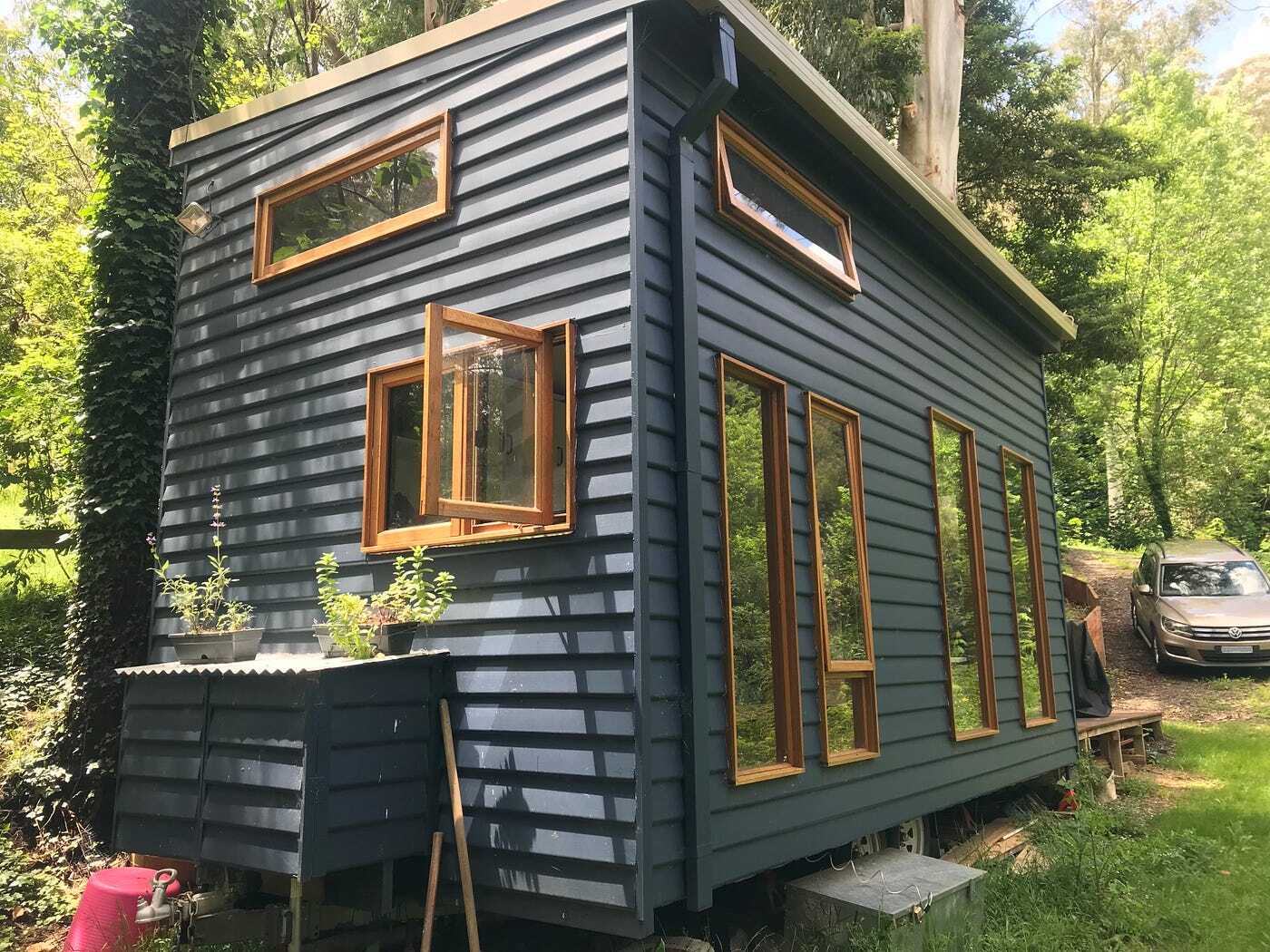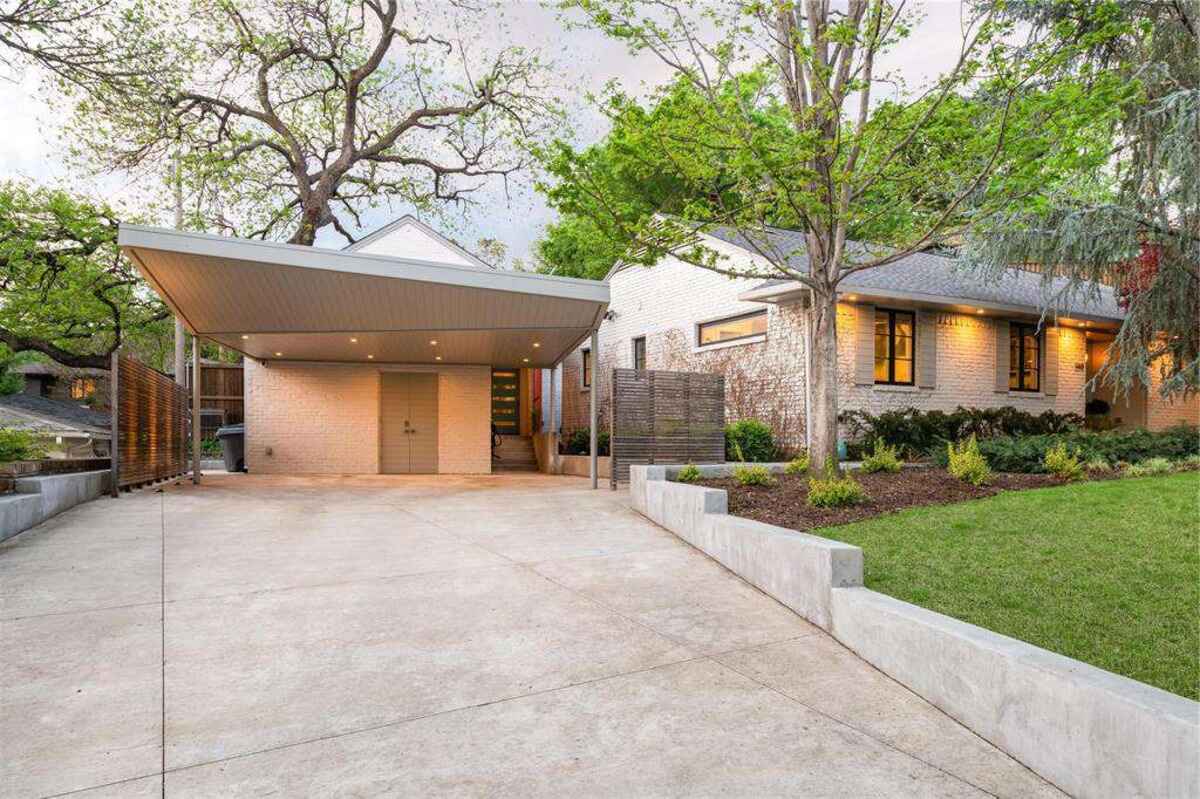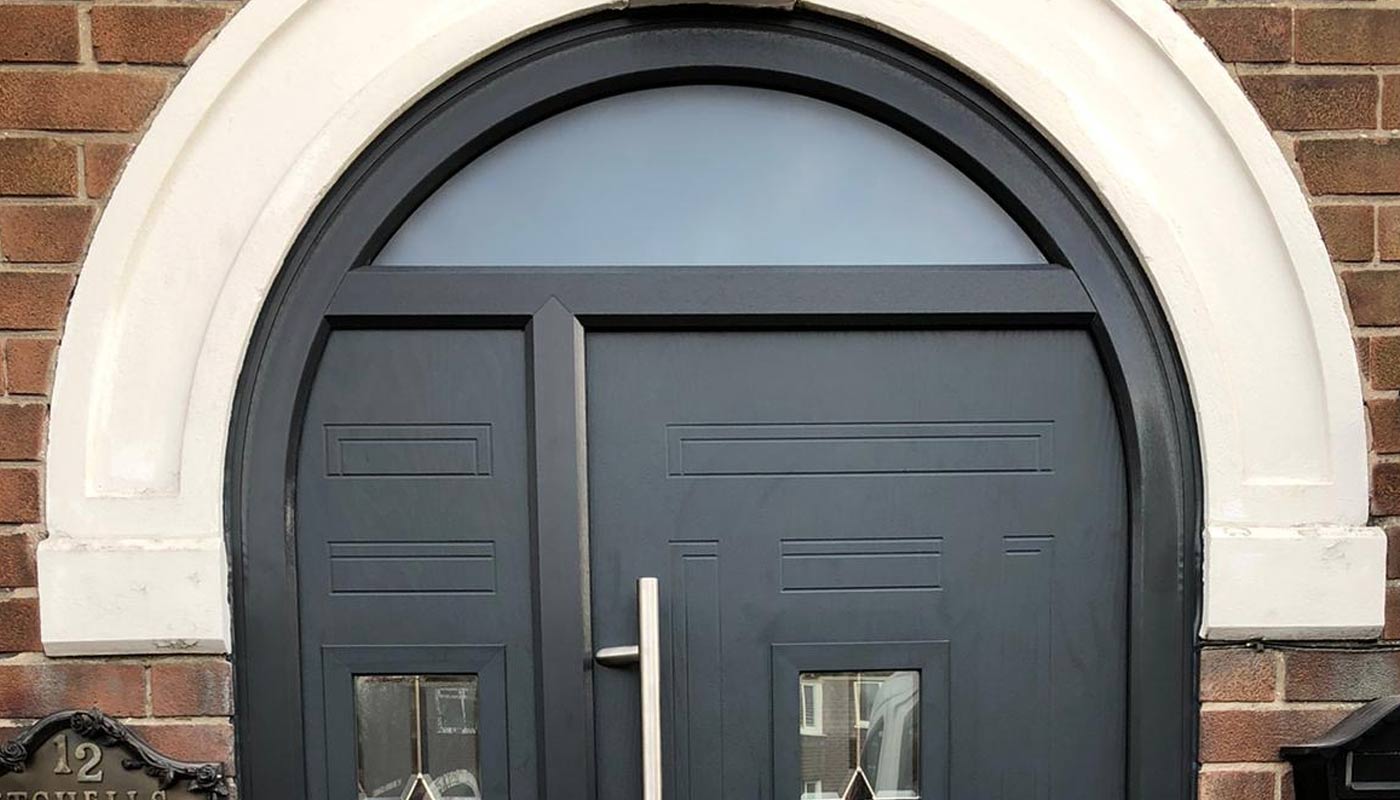Home>Knowledge & Skills>Masonry & Tilework>How To Build A Brick House
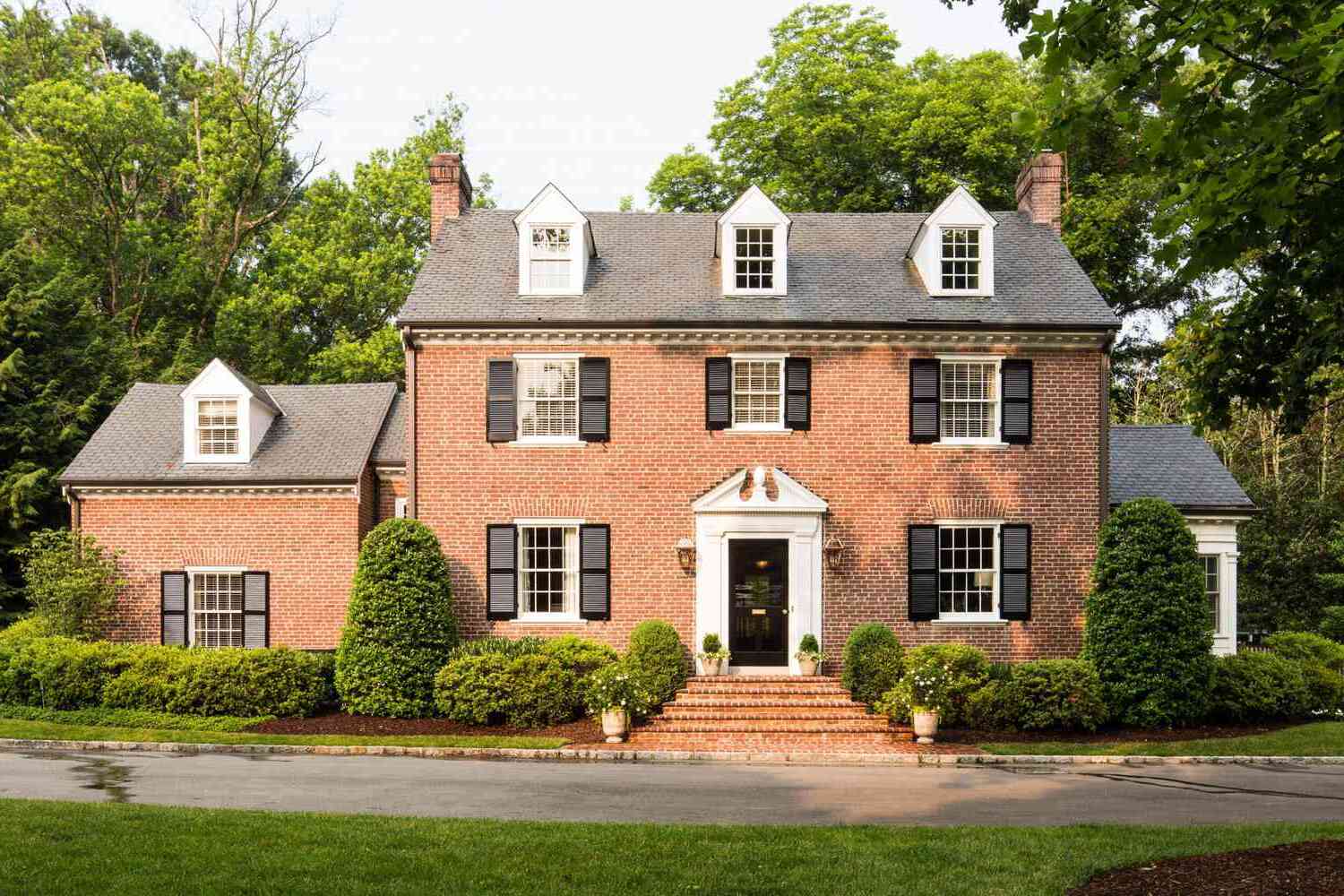

Masonry & Tilework
How To Build A Brick House
Published: March 6, 2024

Our Editor-in-Chief brings a fresh perspective with his expertise in modern home technologies and eco-friendly solutions. Philip bridges tradition with innovation across a wide range of DIY topics.
Learn the essential steps for building a brick house with expert masonry and tilework techniques. Discover the best practices for creating a durable and visually appealing structure.
(Many of the links in this article redirect to a specific reviewed product. Your purchase of these products through affiliate links helps to generate commission for Twigandthistle.com, at no extra cost. Learn more)
Introduction
So, you've decided to take on the challenge of building your own brick house. Congratulations! Building a brick house can be a rewarding and fulfilling project, but it's not without its challenges. From choosing the right location to laying the bricks and adding the finishing touches, there's a lot to consider. In this guide, we'll walk you through the essential steps to help you build your dream brick house from the ground up. Let's dive in and get started on this exciting journey!
Read more: How To Build A Brick Mailbox
Choosing the Right Location
When it comes to building a brick house, choosing the right location is crucial. Here are some key factors to consider:
-
Accessibility: Ensure that the location is easily accessible for construction materials and machinery. A site with good road access will make the construction process much smoother.
-
Orientation: Consider the position of the sun and prevailing winds. Orienting the house to maximize natural light and minimize exposure to harsh winds can enhance energy efficiency.
-
Utilities: Check the availability of essential utilities such as water, electricity, and sewage. Access to these services will be vital for your brick house to function effectively.
-
Soil Quality: Assess the soil quality to ensure it is suitable for building a foundation. Conduct soil tests to determine its load-bearing capacity and drainage properties.
-
Local Regulations: Familiarize yourself with local building codes and regulations. Ensure that the chosen location complies with zoning laws and any restrictions on building materials.
-
Scenic Views: If you have the luxury of choice, consider the surrounding landscape. Positioning your brick house to take advantage of scenic views can add value and aesthetic appeal.
By carefully considering these factors, you can select a location that sets the stage for a successful and harmonious construction process.
Designing the Layout
Designing the layout of your brick house is a critical step that sets the foundation for the entire construction process. Here are the key aspects to consider when creating the layout:
-
Floor Plan: Begin by envisioning the ideal floor plan for your brick house. Consider the number of rooms, their sizes, and their functional layout. Think about the flow of movement within the house and how each space will be utilized.
-
Architectural Style: Decide on the architectural style that you want for your brick house. Whether it's a traditional design, a modern aesthetic, or a blend of different styles, the architectural theme will influence the overall look and feel of your home.
-
Room Placement: Strategically place rooms based on their functions and the desired level of privacy. For example, bedrooms are typically located in quieter areas of the house, while living areas may have easier access to outdoor spaces.
-
Structural Considerations: Work with an architect or structural engineer to ensure that the layout accounts for load-bearing walls, support beams, and other structural elements. This is crucial for the stability and safety of your brick house.
-
Natural Light and Ventilation: Incorporate ample windows and openings in the layout to maximize natural light and ventilation. Consider the positioning of windows to capture the best views and optimize energy efficiency.
-
Future Expansion: Anticipate future needs and potential expansion. Design the layout with flexibility in mind, allowing for possible additions or modifications as your lifestyle evolves.
By carefully designing the layout of your brick house, you can create a functional, aesthetically pleasing, and structurally sound living space that meets your specific needs and preferences.
Preparing the Foundation
The foundation is the backbone of any structure, and when it comes to building a brick house, the preparation of the foundation is of utmost importance. Here's a detailed look at the essential steps involved in preparing the foundation for your brick house:
-
Site Excavation: The first step in preparing the foundation is site excavation. This involves clearing the area where the foundation will be laid. The soil is removed to the required depth, and any debris or obstructions are cleared to ensure a clean and level surface for the foundation.
-
Foundation Design: Work with a structural engineer or architect to design the foundation based on the specific requirements of your brick house. Factors such as soil type, load-bearing capacity, and local building codes will influence the design of the foundation.
-
Footings and Piers: The next step involves constructing footings and piers to support the weight of the brick walls and the overall structure. Footings are typically made of concrete and are designed to distribute the load of the house over a wider area to prevent settling.
-
Reinforcement: Depending on the design and structural requirements, reinforcement such as steel bars or mesh may be incorporated into the footings and piers to enhance their strength and durability.
-
Formwork: Formwork is then installed to create a mold for the concrete footings and piers. This ensures that the concrete is poured into the desired shape and dimensions, following the specifications of the foundation design.
-
Concrete Pouring: Once the formwork is in place, concrete is poured into the molds to create the footings and piers. Careful attention is paid to the quality of the concrete mix, proper compaction, and leveling to ensure a solid and uniform foundation.
-
Curing and Drying: After the concrete is poured, it undergoes a curing process to attain its full strength. Proper curing is essential for the long-term stability and integrity of the foundation. The drying time will depend on various factors such as weather conditions and the type of concrete used.
-
Waterproofing: To protect the foundation from moisture and water damage, a waterproofing membrane or coating may be applied. This is especially important for brick houses, as moisture infiltration can compromise the integrity of the bricks and mortar.
By meticulously preparing the foundation for your brick house, you establish a solid base that ensures the structural stability and longevity of your home. This foundational stage sets the stage for the subsequent phases of construction, bringing you one step closer to realizing your dream brick house.
Laying the Bricks
Laying the bricks is a pivotal phase in the construction of a brick house, requiring precision, skill, and attention to detail. Here's a comprehensive guide to the essential steps involved in laying the bricks for your dream home:
-
Preparation: Before laying the bricks, it's crucial to prepare the mortar mix. The mortar, typically a blend of cement, sand, and water, should have the right consistency for optimal adhesion and strength. Additionally, ensure that the bricks are clean, free of debris, and sorted according to size and quality.
-
Setting the Cornerstones: Begin by setting the cornerstones of the walls. These corner bricks serve as the reference points for aligning the rest of the bricks. Carefully position and level the cornerstones, ensuring that they are plumb and straight.
-
Applying Mortar: Using a trowel, apply a layer of mortar to the foundation or the previously laid course of bricks. The mortar bed should be even and of uniform thickness to provide a stable base for the bricks.
-
Laying the Bricks: Place the bricks onto the mortar bed, pressing them firmly and evenly into place. Use a level to ensure that the bricks are aligned horizontally and vertically. Maintain consistent joint widths between the bricks for a uniform and aesthetically pleasing finish.
-
Cutting and Trimming: As you progress with laying the bricks, you may encounter areas that require custom-sized bricks to fit the layout. Use a brick hammer and chisel to carefully trim and shape the bricks as needed, ensuring a precise fit.
-
Bonding Patterns: Employ bonding patterns such as running bond, stack bond, or Flemish bond to create structural stability and visual appeal. These patterns dictate the arrangement of bricks and joints, contributing to the overall strength and aesthetics of the walls.
-
Tooling Joints: Once the bricks are in place, use a jointing tool to shape and finish the mortar joints. This not only enhances the appearance of the walls but also seals the joints, providing protection against moisture and weathering.
-
Curing and Protection: After the bricks are laid, it's essential to protect them from rapid drying and potential damage. Keep the newly laid bricks moist by lightly misting them with water and cover them with a damp cloth or plastic sheeting to facilitate proper curing.
By meticulously following these steps and techniques, you can ensure that the bricks are laid with precision and care, resulting in sturdy, visually appealing walls that form the core of your brick house. This phase marks a significant milestone in the construction process, bringing you closer to the realization of your vision for a beautiful and enduring brick home.
Read more: How To Build A Brick Bbq With Chimney
Installing Windows and Doors
Installing windows and doors is a crucial step in the construction of a brick house, as it not only enhances the aesthetics of the structure but also contributes to its functionality and energy efficiency. Here's a detailed guide to the essential steps involved in installing windows and doors for your brick house:
-
Window and Door Selection: Begin by selecting high-quality windows and doors that complement the architectural style of your brick house. Consider factors such as energy efficiency, durability, and design aesthetics. Choose windows and doors that offer proper insulation and security while aligning with your overall design vision.
-
Precise Measurements: Accurate measurements are essential to ensure that the windows and doors fit seamlessly into the openings. Measure the width, height, and depth of each opening, accounting for any variations in dimensions. Precision is key to avoiding gaps, drafts, and installation issues.
-
Preparing the Openings: Prior to installation, prepare the openings for the windows and doors. Ensure that the surrounding brickwork is clean, level, and structurally sound. Any debris, mortar residue, or irregularities should be addressed to create a suitable base for installation.
-
Weatherproofing and Flashing: Install weatherproofing materials and flashing around the window and door openings to prevent water infiltration. Proper flashing, such as metal or synthetic strips, helps direct water away from the openings, safeguarding the interior of the house from moisture damage.
-
Setting the Frames: Carefully position the window and door frames within the prepared openings. Use shims to ensure that the frames are level, plumb, and square. Secure the frames in place, checking for proper alignment and smooth operation of moving parts.
-
Sealing and Insulation: Apply a high-quality sealant and insulation around the perimeter of the frames to create a tight seal. This helps prevent air leakage, enhances thermal efficiency, and provides additional protection against drafts and moisture intrusion.
-
Installing Sills and Thresholds: For windows, install sills to provide a smooth transition from the window frame to the interior wall. Similarly, install thresholds for doors to create a secure and weather-resistant entryway. Ensure that sills and thresholds are properly sealed and anchored.
-
Hardware and Finishing Touches: Install the necessary hardware, such as hinges, handles, locks, and latches, for both windows and doors. Test the functionality of the hardware to ensure smooth operation. Complete the installation with any additional finishing touches, such as trim or molding, to enhance the visual appeal.
By meticulously following these steps and best practices, you can ensure that the installation of windows and doors is carried out with precision and care, resulting in a seamless integration that enhances the overall beauty, functionality, and energy efficiency of your brick house. This phase marks a significant milestone in the construction process, bringing you closer to the realization of your vision for a complete and inviting living space.
Roofing and Finishing Touches
The roofing phase of building a brick house is a critical step that not only provides protection from the elements but also adds to the overall aesthetic appeal of the structure. Here's a detailed guide to the essential steps involved in roofing and adding the finishing touches to your brick house:
Roof Design and Material Selection
- Begin by designing the roof to complement the architectural style of your brick house. Consider factors such as roof pitch, overhangs, and the integration of any architectural features.
- Select roofing materials that offer durability, weather resistance, and visual appeal. Options such as asphalt shingles, clay or concrete tiles, metal roofing, or slate can provide a range of aesthetic and functional benefits.
Roof Framing and Sheathing
- Construct the roof framing using sturdy, load-bearing materials such as timber or engineered trusses. The framing should be designed to support the weight of the chosen roofing materials and withstand local weather conditions.
- Install sheathing, typically made of plywood or oriented strand board (OSB), to provide a solid base for the roofing materials. The sheathing adds structural strength and serves as a nailing surface for the roof covering.
Read more: How To Build A Brick Wall
Roofing Installation
- Carefully install the chosen roofing materials according to the manufacturer's guidelines and best practices. Pay attention to proper alignment, fastening, and overlapping to ensure a watertight and durable roof.
- Consider the installation of additional features such as roof vents, skylights, or solar panels if desired. These elements can enhance the functionality and energy efficiency of your brick house.
Flashing and Waterproofing
- Apply flashing around roof penetrations, such as chimneys, vents, and skylights, to prevent water intrusion at these vulnerable points. Properly installed flashing is crucial for maintaining a watertight roof.
- Ensure that the roof is effectively waterproofed to guard against leaks and moisture damage. This may involve the application of a waterproof membrane or coating, depending on the roofing materials used.
Gutters, Soffits, and Fascia
- Install gutters and downspouts to manage rainwater runoff from the roof, directing it away from the foundation of the house. Properly functioning gutters are essential for protecting the structural integrity of the brick walls and preventing water-related issues.
- Complete the roofing system with the installation of soffits and fascia. Soffits provide ventilation and help regulate attic temperatures, while fascia serves as a finishing trim that enhances the visual appeal of the roofline.
Exterior Finishing Touches
- Once the roofing is in place, attend to the exterior finishing touches that add character and charm to your brick house. Consider elements such as decorative trim, shutters, exterior lighting, and landscaping features that complement the overall design.
- Pay attention to details such as paint colors, textures, and materials to create a cohesive and inviting exterior that reflects your personal style and enhances the curb appeal of your brick house.
By meticulously following these steps and best practices, you can ensure that the roofing and finishing touches of your brick house are executed with precision and care, resulting in a structurally sound, visually striking, and inviting home. This phase marks the culmination of the construction process, bringing your vision of a beautiful and enduring brick house to fruition.
Read more: How To Build A Fire Pit With Bricks
Conclusion
In conclusion, building a brick house is a significant undertaking that requires careful planning, attention to detail, and a commitment to quality craftsmanship. From choosing the right location and designing the layout to preparing the foundation, laying the bricks, installing windows and doors, and completing the roofing and finishing touches, each phase of the construction process plays a crucial role in bringing your vision of a dream brick house to life.
By following the essential steps outlined in this guide and leveraging best practices in construction, you can embark on this rewarding journey with confidence. Building a brick house offers the opportunity to create a durable, energy-efficient, and aesthetically pleasing home that stands the test of time. Whether you're a seasoned DIY enthusiast or enlisting the expertise of professionals, the process of building a brick house is a labor of love that culminates in the realization of a place to call home—a sanctuary that reflects your unique style and meets your practical needs.
As you navigate the various stages of construction, remember to stay adaptable, patient, and attentive to the details. Embrace the challenges and triumphs along the way, knowing that each decision and effort contributes to the creation of a space that holds the promise of lasting comfort, security, and joy for you and your loved ones. With dedication and a clear vision, you can transform a pile of bricks and mortar into a cherished haven—a testament to your vision and determination.
In the end, building a brick house is not just about erecting walls and roofs; it's about crafting a place where memories are made, laughter resonates, and dreams find a foundation. As you embark on this remarkable endeavor, may your brick house stand as a testament to your creativity, perseverance, and the enduring spirit of home.



